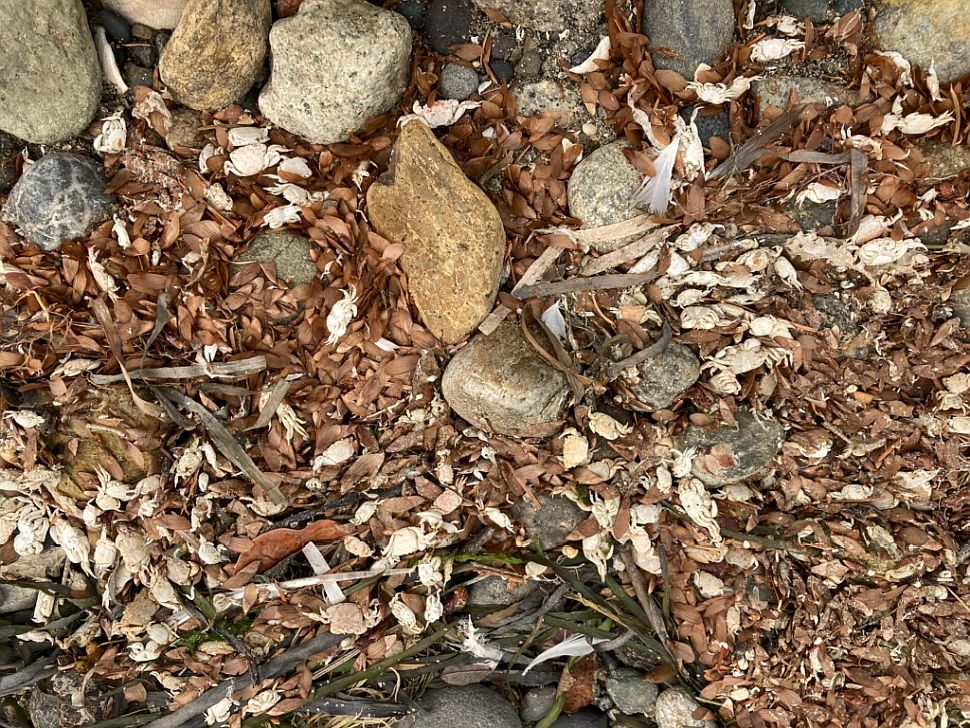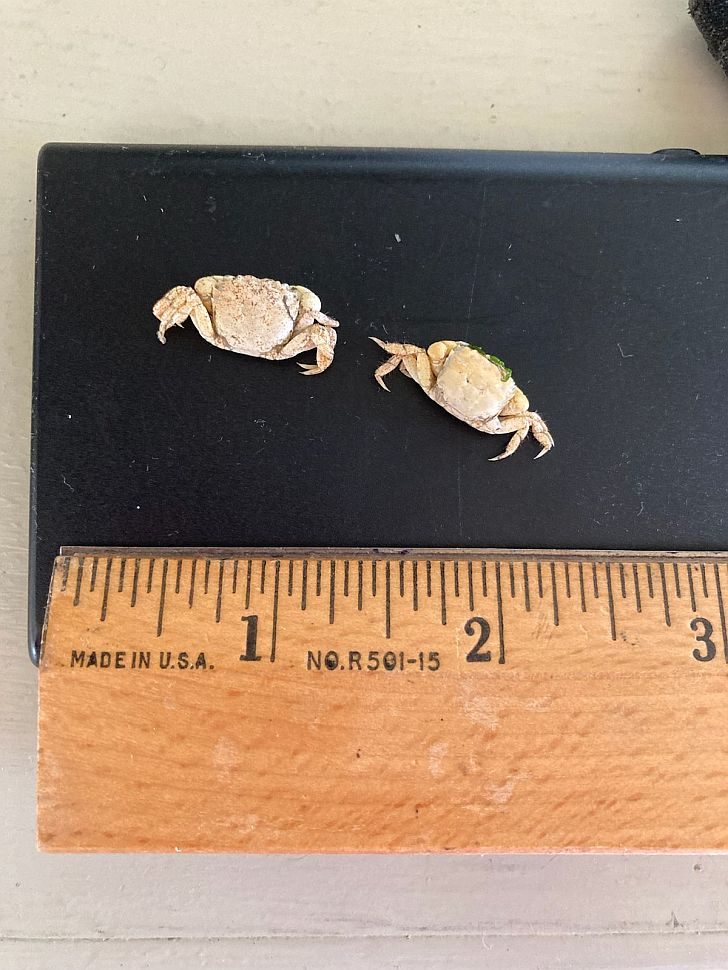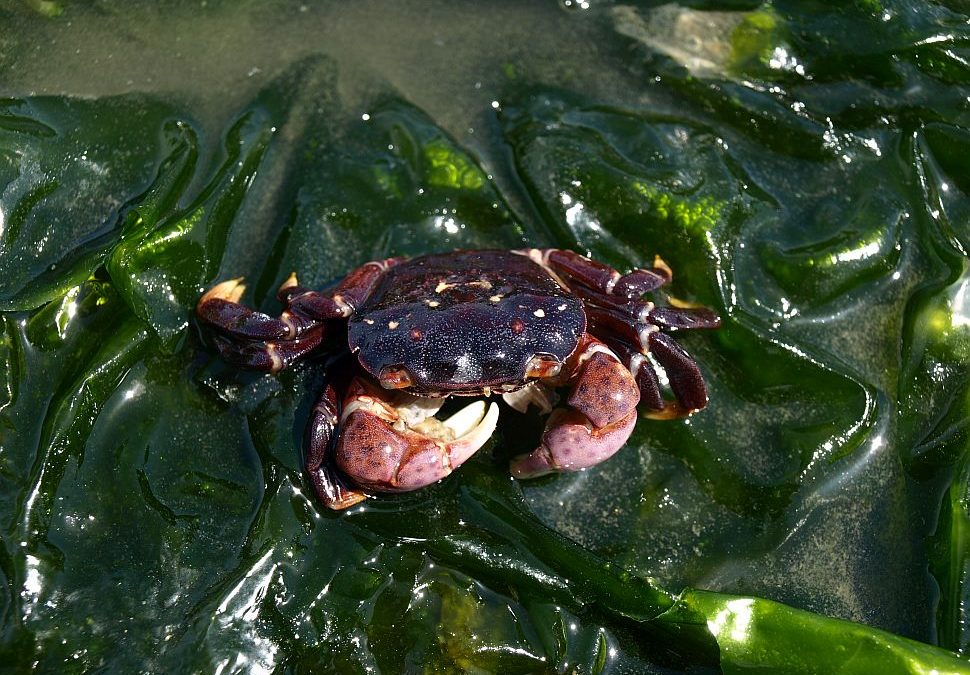This week, Vashon Nature Center is launching a new project called Everyone Counts! —a community-building activity and community science project. The free 12-week course includes a weekly prompt for participants to ground themselves in a single “nature sit-spot,” where they can engage in nature observation skills, mindfulness, and biodiversity science. The project centers on observation skills—of the world around you and the world within.
Islander Jill Andrews, a retired elementary school principal and naturalist, recently shared a revelatory experience that is an example of how close observation can open new worlds of understanding, even in a familiar place we’ve called home for decades.
Andrews, 85, is a longtime islander who spent years of her childhood and adulthood living on the shores of Quartermaster Harbor. Her mother built the Shawnee Beach house Andrews has occupied fulltime for the last three decades with her husband, Murray, where she enjoys looking for salmon who return to a nearby stream, watching harbor seals jockey for position on a raft in the bay, the learning the particulars of a great blue heron’s hunting tactics. Andrews’ four children and nine grandchildren have all grown up with this beach shaping their lives, and in the case of her two sons, even led to careers on the water (one is a ship pilot and the other a yacht property manager).
The fact that this beach is like an extension of herself made it even more disturbing when Andrews witnessed what she thought was a major crab die-off during a beach walk with her Corgi, Shawnee, in mid-September.
She wrote in an email to Vashon Nature Center director Bianca Perla: I walked out on the beach and along the high tide line I found thousands of tiny dead crabs embedded in the seaweed and other stuff that comes in. It was such an alarming sight. Many years ago, this happened but I have not seen it since then. I hope it is a normal event, but I don’t know. When it happened before I called the state naturalists but got no answers. I thought you might be interested in this.

Perla replied with a few possibilities of what to look for if pollution were to blame, and also offered the more hopeful answer that Andrews may have found evidence of a mass molt of purple shore crabs (Hemigrapsus nudus). All crabs molt—as do all crustaceans, including prawns, shrimp, crayfish, and even barnacles. This means that as these animals grow, they must leave their old, inflexible hard shells behind—from the tips of their claws to the tops of their eyes—and grow new ones. (This blog post goes into interesting detail about the molting process.)
Perla replied to Andrews: If it is a molt, the crab feels light and you can flip up the top of the carapace pretty easily from the back. When you do it will be fairly empty inside except for the lungs. (Can you believe it? They actually slip out of their lung casings somehow and leave them behind!! Incredible.) They basically back out of their shell which opens that seal between the top and bottom at the back.
Andrews was so curious that she headed out the moment she received Perla’s email. She wrote: What an unbelievable experience I just had. I have such appreciation for Mother Nature, and now even more. Last night I went out with a flashlight after the tide ebbed and searched for the little white crabs, found 3 and brought them inside. With the tip of a pair of little sewing scissors, I lifted up the back of the shell. It opened like a tiny suitcase just as easy as pie. So, these are molting shells!!!! I’ve been looking at these little crabs all my long life and never knew this about them. This is great news for us all!

Two crabs Andrews collected to examine further to find out whether these were the molted shells of purple shore crabs. Photo credit: Jill Andrews
Andrews, who remembers shaping sand “pools” for purple shore crabs as a curious seven-year-old on the very same stretch of sand, says the place she calls home is forever delighting her.
“I don’t take any of it for granted and I never get tired of looking to see what’s out there,” she says. In Andrews’ case it’s clear that every beach creature counts.
We hope you will consider joining us and signing up for Everyone Counts! Many local school students will be participating, and we hope many others from the community at large do, too. The course is free and written to appeal to people of all ages and was designed to be a fun science activity for families. The more people who join us in looking, the more discoveries we will make about these islands we call home.
Everyone Counts is a labor of love for all of us at VNC. It is not fully funded yet but we felt it was important to start because we were noticing a lot of need right now for a program like this. We extend a huge thank you to The Russell Family Foundation for some seed funding, to Schools Foundation who is actively helping us raise funds to make this program accessible to all school students, and to Windermere Real Estate for providing a match to the Schools Foundation funds. We appreciate any donations through the Schools Foundation or directly through our website to keep this program going. Thank you!
Header photo: Purple shore crab alive. Photo credit: Barb Gustafson


Jill, That is SO COOL!!! About 4 or 5 years ago, I came across lots and lots of those little crabshells as well, in and amongst the Pickleweed at KVI Beach, & at this same time of year! I collected several of them to send to my brother’s grandson, who loved tiny things of all kinds, but they were way more delicate than I thought and fell apart in my hands before I could ship them across the country. I loved reading your story and learning more about your own history! Hello to Murray!
So glad you have the answer now, Susie! And thanks for sharing your story with us, Jill.
Thank you, Jill…
I Also have SEEn many dead crab shells on my beach over the years…although fewer and fewer it seems. Especially dungeness.
Now we know..
Thanks for writing, Patricia! I’m glad this answered a lingering natural history question for you as well.
What a WOnderful idea! What I have always loved to do, anyway!
Sharing On, hoping my grandson can join you!
That’s great, Maureen! I hope your grandson can participate in Everyone Counts! Let us know how it goes.